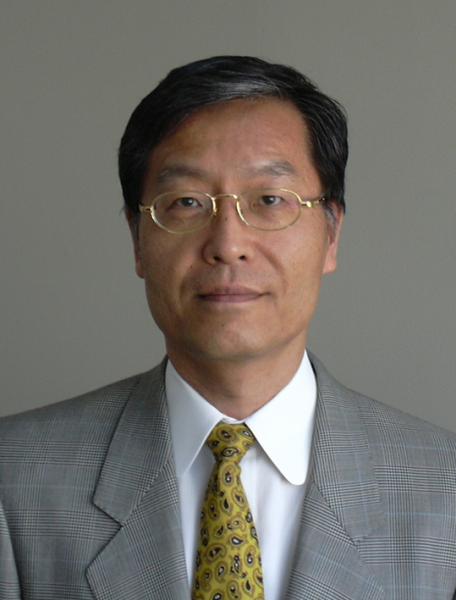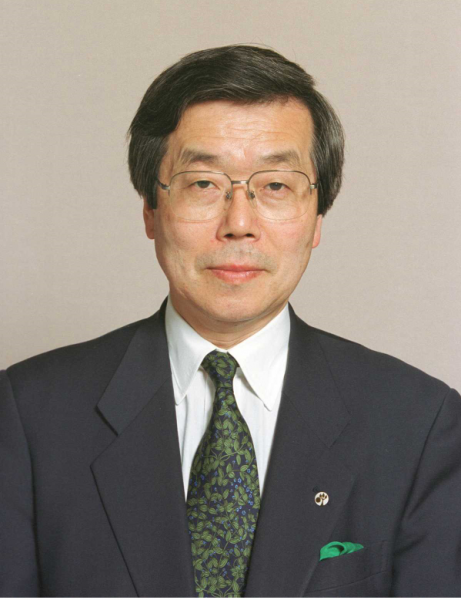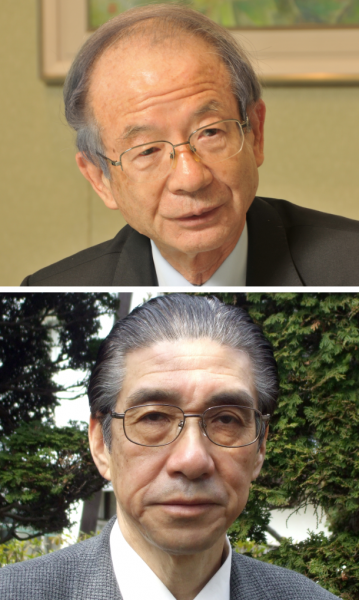The Chinese Economic Slowdown — How Does It Affect Japan? Massive debts, rising consumer prices, declining childbirth and an aging society — Days of fearing the “phantom superpower” are over
Japan today is threatened by the shadow of its inflating neighbor, China. While some people allege that its being a super economic power growing at a 7% rate or that it will pass the United States in GDP are established facts, a substantial number of commentators argue that the Chinese economy is collapsing and will soon default since it has a 200% debt ratio versus GDP and that the country’s outstanding shadow bank financing has surpassed 60% of the GDP.

TSUGAMI Toshiya, Modern China researcher, Tsugami Workshop President
From an economic standpoint as a close observer of modern China, I have to say that these threat and collapse theories are all illusions, far too extreme. The reality is, China’s growth rate will drop drastically and the economy will not empower itself limitlessly, nor will its GDP surpass that of the United States.
In fact, China will be forced to suffer an age of stagnation. The Japanese need to break free from the fright or distrust that has inflated beyond what the country actually is, and calmly face up to the stagnation. That is the current state of the Chinese economy that I described in Chugoku teitai no kakushin (The core of Chinese stagnation; published by Bunshun Shinsho)
So then what risks does the Chinese economy have to face in the coming ten years? First, let’s look at the Chinese economy of the last ten years.
Since joining the World Trade Organization (WTO) in 2001, China succeeded in establishing huge export industry groups to serve as the “factory of the world,” and national income also significantly increased.
At the same time, some 200 million people from the inland farming regions moved to the coastal cities to work in factories. The fact that this former surplus labor force shifted to produce added value served as a major driving force in China’s economic surge. As the trigger for this change, joining the WTO was a brave decision that is still worthy of high acclaim.
But things began changing in the late-2000s. While the export industries continued to grow, their rate of contribution to GDP growth gradually declined. What replaced the export sector in pushing up GDP was investment.
Income that increased owing to rapid economic growth went into savings. The savings rate rose in the government, business and household sectors, from 34.8% against GDP in 1999 to 53.2% in 2008. These figures were also affected by demographic change, as a rapid decline in the birthrate due to the one-child policy tentatively increased the working population ratio and alleviated their burden of bringing up children. Savings that rapidly increased in this manner were poured into investment.
The Lehman Brothers collapse in 2008 fueled this investment boom. Faced with the sudden constriction in the world economy, China decided it must not drop the speed of its economic growth and further pressed down on the investment gas pedal.
The cream was the four trillion yuan (approximately 585 billion USD) investment measure centered on civil-related public investment, but greater impact came from astonishing monetary easing that had the state owned banks burst open its loan valves. Total financial lending at the end of 2009 was up 33% year-over-year, and grew to 240% within the five years to 2013.
Explosive investments resulted in all sectors, including manufacturing, real estate and infrastructure, and total fixed asset investments for the five years from 2009 to 2013 were, according to official figures, 154 trillion yuan (approximately 24 trillion USD). For informational purposes, GDP-term investments in Japan — despite differences in how statistics are recorded — were approximately 110 trillion yen (approximately 1.4 trillion USD) for 2012.
The Chinese economy recovered rapidly with these huge investments, and was also praised as the “savior of the world economy,” China soared past Japan in GDP. But this was an artificially inflated growth rate. These wild investments have left a number of aftermath on the Chinese economy. From a short-term view, overcoming them is China’s greatest hurdle.
First is the excess debt issue. An astronomical amount of more than 150 trillion yuan was invested in the past five years, but returns are terribly inefficient and are not producing revenue to justify the increased debt. For example, one-third of fixed asset investment is put into the manufacturing industry, but due to the excess capacity, new equipment is unused in many businesses. In real estate investments, one-quarter of the total, contrary to the big cities like Beijing or Shanghai that have no bad inventories for now, are in regional cities that ignored demand and built new residential areas, which have now turned into ghost towns.
More serious are the infrastructure investments of regional governments. Since they procured funds mainly on interest-bearing liabilities and ate up the next ten to fifteen years’ worth of investments in a mere three to four years, they are all desperate to redeem principal and interest. While they are barely making ends meet by refinancing loans and selling “slices” of land, once land no longer sells we will witness a rapid increase of near “default” regional governments that can only ask the upper government and ultimately to the central government to be bailed out.
Drastic financial relaxation caused real estate prices to skyrocket and consumer prices to rise. The official consumer price statistics indicate mild inflation of around 2–3%, for which the credibility is doubtable. What people actually feel is a price increase close to 10% annually, and we believe that looking at the past five years there was a 30%–40% price hike in actual terms.
Aftermath is found in the financial sector as well. When investments do not yield profits and debt repayment relies on refinancing, financial institutions face poor return of principal. The total amount of money may increase but money that can be allocated to new loans will decrease, and the money shortage will raise interest.
The rapid increase of shadow banking in the past several years indicates this trend. People who have money feel that bank deposit is not payable at all, because the interest rate is regulated so low as opposed to substantial inflation rate, so they invest in high-yielding shadow banking. Besides, there are many companies which are pressed to refinance previous debts immediately, so they have no choice but to borrow, even under much higher interest rates than bank loan.
We must note, though, that while the public talks of a collapse of the Chinese bubble, this bubble is different from the Japanese bubble of the late-1980s to early 1990s. In Japan, it started from real estate, a small section of the economy, but it caused a deep wound that hurt financial industry and ultimately spread the disease to the entire body. China, on the other hand, is not yet deeply wounded, but it is mildly hurt in a wide range of business fields.
However, it cannot deny that the economy deviated from its normal orbit and damaged its balance sheet. We can safely say that an investment bubble occurred in China.
How the Chinese Communist Party understands this danger
I do not think, however, that this Chinese bubble will immediately collapse. Take for example China’s debt total of government, household and businesses, which has ballooned to over 200% to GDP. Compare the figure to that of other nations — though Japan’s 400% is beyond comparison — and we see, with the United Kingdom at 280% and the United States at 275%, that the idea of the Chinese economy immediately collapsing at 200% is baseless.
Some people hear that the balances of China’s shadow banks have exceeded 60% of GDP and that the economy is nearing collapse. But the same figure for the United Kingdom is 370%, Singapore 260%, the United States 153% and Japan 67%. Here again, we should not respond reflexively without making objective comparisons.
Where this investment bubble winds up depends largely on how the economy is run. Leaders of the Chinese Communist Party actually know that their country’s economic growth has reached a dead-end. Their awareness of this crisis was clearly seen in the Third Plenary Session of the 18th CPC Central Committee held last November.
Many bold reform options were incorporated into the session. While I cannot list them in detail here, they include content the likes of Abenomics’ “third arrow” of heightening market vitality by lifting regulations, bringing in private capital into state sectors, establishing a new free trade experimental zone (FTZ) in Shanghai, and further opening doors to foreign countries.
A phrase most emphasized in the session was “decisive role of the market,” which practically meant, on the flipside of the coin, that they admitted that the system of CPC and the government driving the economy no longer works. It likely indicates the CPC’s awareness that unless it resolves the deadlock of economic growth that was its golden billboard, the people will turn their backs on it.
In the medium term, the key to China’s economic growth is in improving productivity. If China can absorb double digit wage increase with improvement in productivity and avoid inflation, it can sustain real growth, but when the opposite happens, the economy will turn into a so-called “middle income country trap” wherein growth is merely nominal and not real. The reform plans that the Third Plenary Session set out are mostly turned in the right direction. The remaining issue is whether they can make them come true.
On the other hand, there are moves we can hardly praise. In the National People’s Congress (NPC) held last month, Premier Li Keqiang not only set a GDP growth rate target that is too high at around 7.5%, he declared that the nation will “rationally increase fixed asset investments.”
But according to official statistics of China, just over half of the 7.7% economic growth rate for 2013 was supported by investments that increased 19% from the previous year, and growth contributions of the remaining consumption and external demand did not even reach 4% combined. In order to achieve 7.5%, over 3% needs to be complemented with increase in investments, but total fixed asset investment for 2013 has already reached 43 trillion yuan (approximately 7 trillion USD). If the nation continues to increase investments like this, it will cause more damage to its balance sheet.
What should you do when facing such a situation? Just bear economic slump for a while and the economy recedes and investments decline. The temporary recession may be tough, but live through it and health returns. That’s the market economy. When I hear “7.5% growth,” it sounds to me that they are about to do the exact opposite of what they declared in the Third Plenary Session with the “decisive role of the market.” Pile up more inefficient investments and debts like this and they are sure to fall into a true economic crisis.
Yet China insists on 7% growth because it is afraid that a lower figure will increase unemployment and drop society to instability. This view is no longer matching the real status of China.
growth of over 10% in 2010, the job openings-to-application ratio in the cities continues to rise. This is because the shortfall of work force has become conspicuously serious; it is not that a decline in growth is increasing unemployment.
Seen in terms of population trends, a decline in the young labor force is inevitable, so the shortage of blue-collar workers will intensify in the late-2010s and wages will rise further. Labor costs have continued to rise at around 15% annually in the past six years. My concern is that the spiral of high wages and high commodity prices will cause further inefficiency in the economy.
China seems to worry not about the blue-collar workers but about job shortages for college students, whose numbers rapidly increased in the last decade. But to resolve this problem, the nation needs to increase employment at intellectual work — particularly in the service industry sector.
The bottleneck here is the state-run enterprises. In China, infrastructural tertiary industries such as finance, telecommunications and energy are all under the monopoly of state enterprise sector, which hinder the free development of service industries.
In that sense, the solution to a job shortage in college students is, as the Third Plenary Session declared, to lift regulations, run a market economy and develop an economic system that is not led by state-run enterprises, rather than pile up investments.
In sectors like financial administration we are seeing the policies of the Third Plenary Session turn into specific action. On March 11 for example, Governor Zhou Xiaochuan of the People’s Bank of China (Chinese central bank) stated — with an asterisk that it is his personal view — that interest on savings will be liberated in the next year or two.
This will be a huge reform. As I mentioned earlier, if savings interest that was kept low under the existing regulations is liberated, interest rates will rise, the profit margins of banks will be compressed and inefficient small/medium banks will be weeded out. Once this affects loan interest it will directly affect heavily indebted companies, particularly the state-run sectors and local governments.
The fact that shadow banking that exists under free interest is rapidly increasing signifies, in a sense, that the market is already pressed to liberalize and there is no time for leisure. There will be great resistance, but its effect on achieving efficiency in the economy will be huge.
China has little time left
What we still need to keep an eye on in terms of China over the next ten years is how far it will go in developing social security for farmers that make up two-thirds of the population, particularly social security for the 200 million of “used to be” farmers working in the cities. Residents in the cities and farm villages were registered under different systems. Since welfare systems, including medical, pension, education, housing, unemployment insurance and welfare relief, are all packaged together with family registration, registered farmers have been discriminated against in all aspects and are the major players in issues of rich-poor disparities and social instability. The young farmers in the cities and second-generation “immigrant” farmers were the ones who caused a commotion when Japan bought out the Senkaku Islands. Since the financial state of local governments that should fund social security is in dire straits, as mentioned earlier, the central government will need to set a national policy to fund resolution of these differences.
From a longer perspective, the one-child policy of the past that rapidly brings about a society of fewer children and more elderly will become a heavy constraint on the Chinese economy. As mentioned above, the key to China’s future economic growth is in improving productivity, however, the effort in doing so will be offset by substantial decrease in working force. Since China is following the footsteps of Japan’s demographic change at a time lag of approximately fifteen years, it will likely suffer a halt in real growth by the mid-2020s as Japan suffers for now.
Another major issue that will come with the low-birthrate, aging society will stem from the fact that the nation is scarcely saving for pensions. Two summers ago, a group of reformist Chinese economists estimated that due to pension debt that will accumulate from the 2020s, the national treasury’s pension debt will reach a scale equivalent to 80% of the GDP and the entire national debt to 107% of the GDP by 2050 unless the government implements some kind of reform. This estimate, however, assumes the economic growth rate at 7.2% in 2020 and 5.2% even in 2030. To me, that is completely unrealistic.
Therefore I ran an estimate of my own assuming low growth (nominal 5.0% and real 3.0% for 2020, and a drop to nominal 3.0% and real 1.0% for 2030 and all years thereafter), which resulted in the 2050 national debt well exceeding 300% in GDP terms. The Third Plenary Session set out a policy to use dividends and shares of state-run companies for civil purposes. The interest groups that currently consider those riches their own will likely put up fierce resistance, but the nation can never fund the pension unless it undertakes something that extreme.
In order for the Chinese economy to aim for long-term stability and prosperity, it must, in the short run, first break out of its unsustainable economic high-growth path, even if it means enduring the pains of low growth. In the medium term, it must implement reforms to develop markets and shift to a healthy, private-led economy, dissolve class differences between urban residents and farmers, and work to resolve pollution issues. The issue of an aging, low-birthrate society comes beyond that, but since it is inevitable, the nation must accommodate itself under that presumption.
In other words, China does not have much time left. We may think the country is foolish to increase its budget for military and space exploration when it does not have social security or pension systems, but that is all up to what the Chinese people decide.
Speaking of the military, I believe that East Asian security was significantly disturbed because both the world and China have expected that China will continue high growth and become the world’s top economic power.
After the Lehman collapse, China dramatically recovered its economy with a four-trillion-yuan investment, while advanced economies remained low. Seeing this dramatic contrast, China fell into a psychological bubble of sorts thinking that its economy would overtake the United States in GDP terms in a matter of time. Even in foreign affairs, China was always treated lightly as an underdeveloped country and cannot claim national interests, but feeling that the power balance had changed, the dangerous idea of “core interests” — of never to compromise one bit — arose within the nation concerning issues of territory, territorial waters and sovereignty.
But that image of the future was largely illusory, and the Chinese economy currently suffers from serious “after-the-party” fallout. As the Chinese people face up to the reality, their psychological bubble is likely to gradually disappear, but that will probably take ten years.
Recent Japanese sentiment on China has, as public surveys indicate, fallen to the most disastrous depths possible and are almost at a “Chinaphobia” or “hysterical” level. Look calmly and objectively and we should see that there is no way China will gain limitless strength, but the antipathy and anxiety will probably not dissolve for another ten years until the so-called “Rise of China” will feel like an old story.
Neither China nor Japan has the economic leisure or time to conflict over land or waters with its neighbors and to damage economic relationships. But we should expect that this tension in the Japan-China relationship will last for at least another ten years until the effects of the illusion die out.
What is Japan to do, stuck between the United States and China?
So then how should Japan face up to China during the next ten years? Most important during this unstable decade is to avoid any fortuitous conflict that will take the situation to a point of no return.
And just because China’s rise will slow does not mean that we have the leisure of conceit that there is nothing to fear. In terms of the issue of aging and low birthrate, Japan is running many laps ahead of China. Japan must avoid declining at a pace that exceeds that of China.
I believe that, just as China has no leisure to continue land or water disputes, or its expansionist policy, Japan has no leisure for martial nationalism. It is much better in terms of the economy or security to aim at being a nation that the world — including tourists and foreigners wanting to obtain Japanese nationality — will come to love.
The BBC’s Country Ratings Poll, conducted at the end of every year into the following year, conducts interviews and surveys in twenty-five nations on whether each nation is viewed positively or negatively. Japan ranked number one two years ago, but dropped to fourth last year. This year, hate-rousing information on historical revisionism was reported during the survey period, so I fear that it could abruptly drop to below tenth place (note: the result was actually not that bad, but Japan again dropped to fifth).
Japan’s GDP, which was more than 10% of the world total during the bubble era, is now less than half that. Should we regret that the “superpower ego” remains as in those days? We should not throw our weight around. It is tough, but we must face up to reality, respond sensitively to changes in world affairs, and aim to maintain peace and stability.
Foreign relations important to Japan are, indeed, those with the United States and China. I often feel that the leaders of the United States and China are aware of the heavy weight of their internal issues and are reshaping their strategy.
The Obama administration in the United States often had to face the “fiscal cliff” conflict wherein the opposition Republicans, especially the Tea Party legions, took the government budget hostage to forcefully cut expenditures. For the U.S. government, which had accumulated a budget deficit ever since the Lehman collapse, the economy had recovered to a certain level, but it cannot avoid fiscal reconstruction, especially cutting the national defense budget.
Even for China’s Xi Jinping administration, the foremost priority is to avoid the economic crisis and find a new way to revive economic growth, and it will not want to cause trouble with the United States. That is how the so-called new model of major country relationships came about.
In June 2013, when the Xi administration was formed, President Xi visited the United States and met with Barack Obama. That was where Xi advocated this new model that centered on approving of each other as major countries and mutually respecting the other’s core interests, avoiding zero-sum games like the U.S.-Soviet conflict of the past, and contributing to resolving global issues.
This sounded a not bad proposal for the United States. It will potentially save resource allocations to the Pacific geared toward conflict with China. National Security Adviser Susan Rice’s speech that mentioned, “[The Obama Administration seeks with China] to operationalize a new model of major power relations,” or Vice President Joe Biden’s visit to China, can all be understood under these circumstances.
Japan needs to be sensitive to such U.S.-China relationships. In that sense, Prime Minister Abe Shinzo’s visit to Yasukuni Shrine just as the interests of the United States and China had matched and were about to develop a consensus was disappointing, seemingly ranking the entire nation’s security below a promise he had made with his core supporters.
I believe that a nation’s political capacity is measured in its times of stagnation. The United States, forced to temporarily scale back its role as the world’s policeman, has shown itself to be unreliable in Syria and Ukraine. Many condemn Obama for his lack of leadership, but I am of a different view.
When the United States cuts down on its supply of the international public good, namely the military, that it had offered to the world, it obviously means that the United States will let go of its range of influence and advantage, and even has the risk of “exporting” instability to the world.
But on the flipside, a nation that can reluctantly yet intentionally constrict itself for the sake of preserving future sustainability is one with high political capacity and the potential to reestablish itself in the future. To the contrary are nations of weak political capacity, such as China that cannot change its billboard of 7% growth when it is completely unsustainable, or Japan that still continues fiscal spending at double its tax revenue. I wonder how Japan, the United States and China will look like ten years from now.
Instead of complaining that China is violent or the United States is unreliable, we should consider the state of all sides objectively and think calmly about how Japan can survive under restrictions of the new international environment.
Translated from “Chugoku-keizai Suitai de Donaru Nihon (The Chinese Economic Slowdown — How Does It Affect Japan?),” Bungeishunju, May 2014, pp. 164-171. (Courtesy of Bungeishunju Ltd.) [May 2014]




